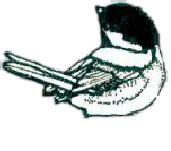Second Chance Wildlife
Rehabilitation
“Until we extend the circle of our compassion to all
living things, we will not find peace.”
Albert Schweitzer


Coyotes and foxes are born in the spring. At birth they are covered with short, dark
fur. Even red foxes have dark brown or black fur when they are born. Their eyes are
closed and will remain closed for several weeks. Both coyotes and foxes have wide,
blunt noses; rounded ears; and dog-
Pups begin to emerge occasionally from the den as the weaning process begins, at approximately four weeks old for red foxes and three weeks old for coyotes. The babies begin to play and fight outside the den and are brought food by their parents. The first week after red fox kits emerge, their fur may still be brownish in color, but it shortly molts into the reddish color typically seen in adults. The fur on their legs is black.
Juveniles are still being cared for by their parents but are learning to hunt on
their own and are gradually spending less time at the den sight. By late summer and
early fall, juvenile foxes and coyotes are becoming increasingly independent. The
age at which they become totally independent varies by species and other factors.
Juveniles seen alone at this time of year, or even those juveniles known to be orphaned
should be monitored for signs of deterioration such as weakness, lethargy, or human-
If baby foxes or coyotes are seen in early to mid-
Any young coyote or fox that appears weak or lethargic, is seen sleeping in an exposed area, frequently vocalizes or approaches people should be rescued. Call a wildlife rehabilitator BEFORE attempting a rescue.


Foxes